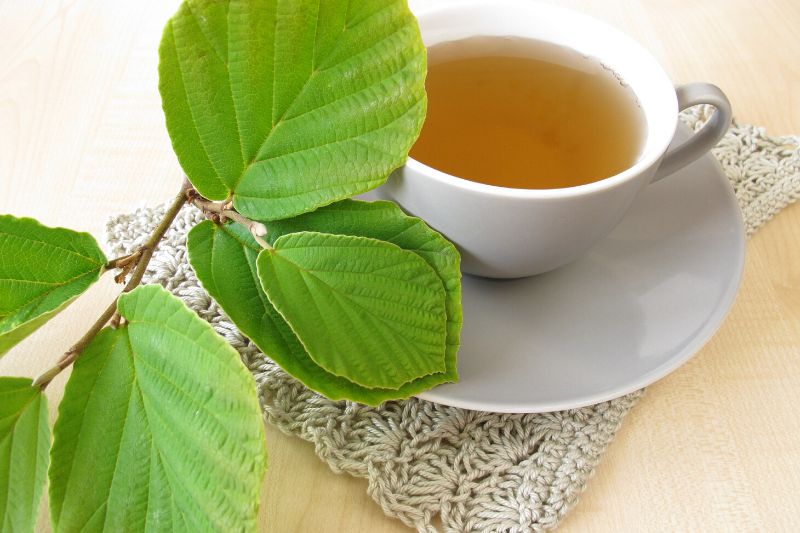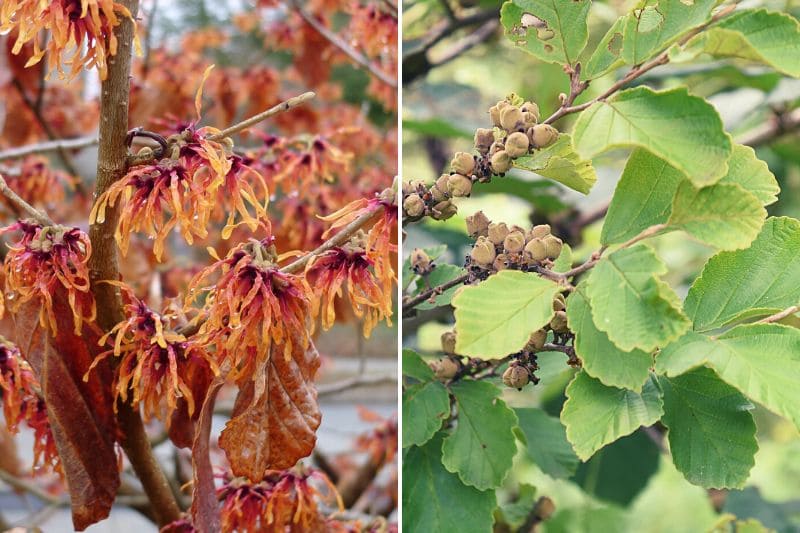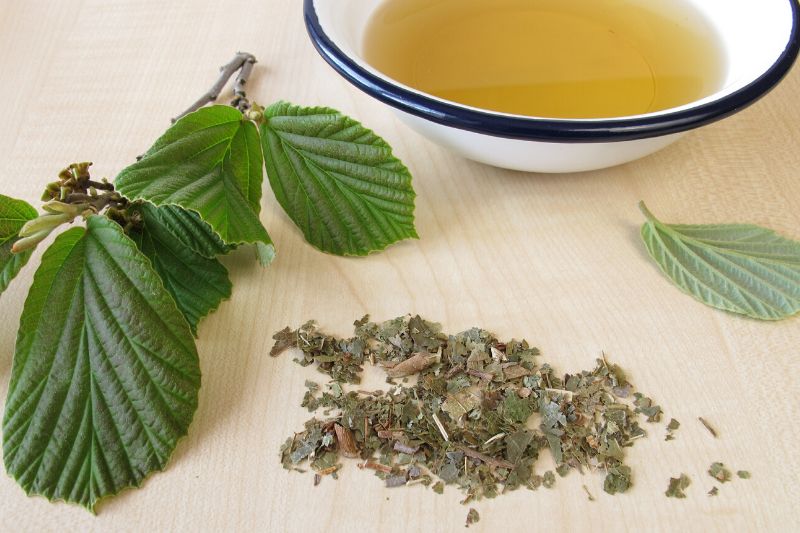Offering a colourful winter flowering, from yellow to red via orange, witch-hazel is an ornamental bush appreciated in the garden. Its flowers take the form of scented filaments and its leaves turn flamboyant shades in autumn. Elegant in a garden, witch-hazel is also used in phytotherapy for venous insufficiency and to soothe skin inflammations. Discover how to make witch-hazel infusion.

Which witch-hazels to use?
Choose an organic witch-hazel, without pesticidal or chemical products.
What are witch-hazel's virtues?
- Witch-hazel is used in phytotherapy to treat venous insufficiency, from heavy legs to haemorrhoids and varicose veins, and to calm skin irritations.
- Leaves and bark are used for infusions.
- They are also said to have antiseptic and anti-inflammatory properties.

How to dry witch-hazel leaves and bark?
- For your infusions, you can harvest and dry witch-hazel leaves and bark yourself.
- Collect leaves and bark from witch-hazel, bearing in mind that foliage is deciduous and appears in spring then disappears in autumn.
- Dry harvested parts of the bush in open air by laying them out on absorbent paper
- When dry, store in an airtight jar, such as a glass jar, in a cool, dry place protected from light
How to make witch-hazel infusion?
- Use 5 to 10 g of dried leaves and bark for 1 litre of water
- Bring water to the boil and let dried leaves and bark infuse for 5 to 10 minutes
- Infusion can be drunk at a rate of 1 to 2 cups per day, used as a mouthwash or applied externally to the skin.
- When consumed orally, witch-hazel may relieve sensations of heavy legs, varicose veins and haemorrhoids.

Contraindications
- Use of witch-hazel may cause heartburn, and rarely skin allergies.
- It is particularly not recommended for pregnant or breastfeeding women, as well as people on anticoagulant treatment because witch-hazel affects circulation and thins the blood.
- Ingestion of witch-hazel products is reserved for people over 18 years old.































![[plant id="hamamelis"]
To make witch hazel herbal tea, simply infuse 1 to 2 teaspoons of dried {glossary}witch hazel{/glossary} leaves in boiling water for about 10 minutes. Strain the leaves and enjoy your soothing and aromatic tea. [plant id="hamamelis"]Infusion of witch hazel.](https://en.promessedefleurs.eu/blogwp/wp-content/uploads/2023/02/Comment-faire-de-la-tisane-dhamamelis-.png)
Comments